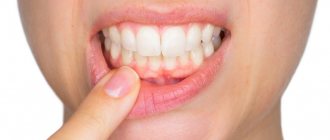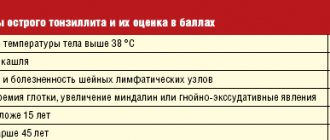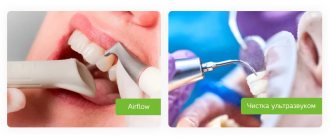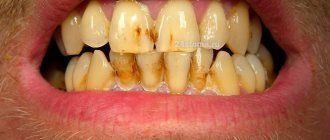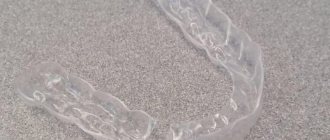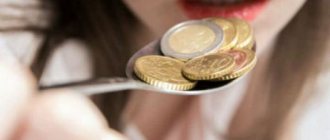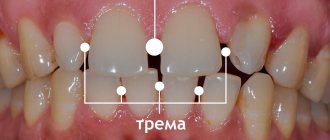Pain after tooth extraction: how long does it last, and is it normal? These and other questions concern patients after dental procedures. Pain syndrome is normal in several cases: early postoperative period, complex removal, simultaneous implantation.
Normally, pain can persist from several days to a week, and its intensity should decrease. The appearance of symptoms such as increased pain, swelling, inflammation, bleeding or the appearance of purulent exudate is a reason to immediately consult a doctor.
Causes of pain
The further a tooth is in the row, the more difficult it will be to remove, as it has a more extensive root system. This often leads to inflammation and improper healing of the hole. According to statistics, complications are most often diagnosed after the removal of wisdom teeth (eight teeth). Also, the cause of long-term toothache is the lack of experience of the dental surgeon and incorrect removal tactics.
Let's look at the main complications that lead to long-term pain after tooth extraction:
- Bleeding – Bleeding normally stops within 30 minutes of surgery. But in people with diseases of the hematopoietic system, diabetes mellitus, the hole may bleed for several hours. The critical period is the first day. If you experience even slight bleeding during this time, consult your doctor. He will perform additional tamponade, diathermocoagulation or suturing of blood vessels.
- Alveolitis is a common infectious complication that is characterized by inflammation of the soft tissue around the socket. There are aching pains that intensify while eating. As the disease progresses, pain may radiate to the temple and ear on the affected side. Treatment by a dentist is required. Untimely treatment can lead to the development of an abscess and blood poisoning.
- Paresthesia is a loss of sensation that occurs when the mandibular or maxillary nerve is injured. Normally, the numbness goes away within 1 or 2 weeks. To reduce the period, physiotherapeutic methods are used. If discomfort persists for more than a month, you need to contact the dentist.
- Leaving tooth fragments in the wound - foreign objects in the socket interfere with the normal healing process, which leads to prolonged pain and inflammation. Small fragments may come out on their own when rinsing. X-ray diagnostics are required.
- An abscess is a purulent process that occurs in a hole as a result of infection. Accompanied by throbbing pain, fever, headache, and weakness. An opening and drainage of the abscess and antibacterial therapy are required.
- Osteomyelitis is an inflammation of the bone tissue of the jaw. Accompanied by acute pain, unpleasant odor, mobility of adjacent teeth, and swelling of the jaw. Pathological changes in bone tissue are visible on x-rays. In advanced cases, surgical treatment is required. Without treatment, the infection can spread to the soft tissues of the face and neck.
The most common cause of long-term pain after tooth extraction is the absence of a blood clot, that is, a “dry socket.” This pathology is often observed in older people, smokers and in patients with hormonal disorders.
What is the facial nerve?
The trigeminal nerve, also known as the facial nerve, is the largest of the twelve cranial nerves. It originates in the ear, after which it branches, the first path reaches the frontal part, the second is located at the jaw. The nerve goes around almost the entire surface of the human face; it literally controls it.
Every person has two facial nerves - one on each side of the head. It is in contact with other cranial nerves and has supersensitive fibers.
Doctors divide the disease into two types - primary and secondary. The primary one manifests itself as a complication from a cold, in this case the normal nutrition of the nerve is disrupted. Secondary occurs with severe intoxication against the background of inflammatory or infectious diseases, as well as tumor processes.
How to relieve pain at home
For the first 2–3 days, pain and discomfort are a normal reaction of the body to injury. When removing sevens or eights (wisdom teeth), pain can be felt for up to 5 days. In addition, it can cover the entire jaw and radiate into the ear. This is normal if the pain decreases over time.
To speed up the gum restoration process, it is recommended:
- Do not apply heat to the painful jaw area. It is better to apply a cold compress, which will relieve inflammation and stop bleeding.
- Try not to eat on the injured side; food and drink should be at a comfortable, warm temperature.
- Rinse your mouth after every meal. It is better to use herbal decoctions with an antiseptic effect. It is also advisable to use pharmaceutical antimicrobial agents for rinsing.
- Until the hole has healed, do not use aggressive mouth rinses and toothpastes.
- Do not remove the blood clot or touch the socket.
If the pain is severe, you can take analgesics or non-steroidal anti-inflammatory drugs. They will not only reduce pain, but also relieve swelling.
At the dentist
If there are symptoms indicating complications, the doctor must determine the cause of the pathology. He performs the necessary diagnostics and visual inspection. Sometimes an x-ray may be needed.
Treatment methods are usually as follows.
When suppuration , the doctor cleans out the pus through an incision in the tissue; then prescribes antibiotics.
When it comes to trigeminal neuralgia , complex treatment is carried out with the prescription of drugs that help restore damaged nerves, as well as anesthetics.
Pathologies that arise after tooth extraction are treated differently
The pus is cleared from the hole, then a tampon with NSAIDs is applied. This is performed if there are complaints of a “dry socket”. In addition to the dentist, it is worth visiting an otolaryngologist to rule out concomitant pathologies.
- Antibiotics after wisdom tooth removal
Important ! For a speedy recovery, it is extremely important to maintain rest, ideally bed rest. It is better to avoid physical activity completely.
The amount of liquid you drink is limited, and it is better not to eat solid food temporarily. In order to reduce pain, you can take a painkiller prescribed by your doctor in the dosage indicated in the instructions.
Until the condition returns to normal, it is better to avoid eating hard, hot, fatty or too spicy foods.
The total time of therapy is up to several days. However, even after completing the course of treatment, the patient sometimes experiences weakness and mild pain.
When a doctor's help is needed
If you have the following symptoms, you should contact your dentist:
- if bleeding from the socket does not stop within 24 hours after tooth extraction;
- increased body temperature, weakness, headache;
- swollen lymph nodes;
- heavy bleeding, in which the patient has to change the cotton swab every 10-15 minutes;
- redness and swelling of the soft tissues near the hole, which are accompanied by acute, ongoing pain;
- severe numbness of the jaw;
- mobility of adjacent teeth;
- the appearance of bad breath;
- purulent discharge from the socket;
- formation of an abscess on the gum;
- liquid nasal discharge can occur when the maxillary sinus is injured as a result of difficult removal.
All these conditions require qualified medical care.
Paresthesia after surgery
Paresthesia occurs if a nerve is damaged during tooth extraction. It is characterized by numbness of the facial muscles or tongue. This usually happens after removal of the figure eights, because they are located in close proximity to the facial nerves. Typically, this symptom goes away on its own within one or two weeks, but in severe cases it can linger for a long time or become permanent. This is a fairly rare consequence of the operation.
Paresthesia occurs infrequently
Treatment methods
The treatment regimen depends on the cause of the pain, symptoms and severity of complications. After examination, X-ray diagnostics are used to clarify the diagnosis. It allows you to assess the condition of bone tissue and identify the presence of tooth fragments or root remains in the wound.
- Local treatment
Includes tight tamponade, use of a hemostatic sponge for heavy or prolonged bleeding. To relieve inflammation in the absence of complications, the doctor prescribes rinsing with antiseptics and using ointments with an analgesic effect. Aerosols with antimicrobial properties are effective for stomatitis.
- Drug therapy
Includes taking antibiotics for severe extractions, as well as for wisdom teeth removal. In case of loss of sensitivity (paresthesia), vitamin B complexes in capsules or injections are prescribed.
- Physiotherapeutic methods
UHF courses, electrophoresis, and microcurrent therapy help to cope with pain. On average, 10 sessions are recommended. This treatment is prescribed after the hole has healed.
- Surgery
If purulent contents are present, the abscess (abscess) is opened and cleansed. Turunda with a medicinal composition is placed in the wound. In case of a hematoma (accumulation of fluid or blood), an incision is made in the gum under local anesthesia and a drainage is installed. It helps drain the contents of the hematoma. After cleaning the wound, the doctor applies stitches.
You should not let the pathological condition progress and delay it until further surgery. A timely visit to the dental office will allow you to use gentle medicinal treatment methods.
Diagnosis of inflammation of the trigeminal nerve
Depending on the affected area and the set of symptoms, the strategy for diagnosing the disease is determined. To determine the location of nerve damage, the severity and dynamics of recovery, doctors prescribe a hardware diagnostic method, for example, electromyography. MRI and CT scans are used to determine the presence of tumors in the brain.
The patient may also be referred for a general or biochemical blood test, x-ray of the lungs, ultrasound of soft tissues or ophthalmoscopy.
You can be confident in the quality of the procedures performed in the clinic and the high accuracy of the results of MRI, CT and other methods of diagnosing various diseases. Medunion performs magnetic resonance imaging of all types: head, spine, abdominal cavity and joints using modern equipment.
Prevention of complications
Tooth extraction is a radical measure when other treatment methods have proven ineffective. To avoid long subsequent recovery, you must follow your doctor's recommendations.
In the first hours after the procedure, do not smoke or eat. These are important rules that many people ignore, which leads to infection in the socket.
On the day of tooth extraction, do not actively rinse your mouth.
This may damage or flush out the blood clot that helps the socket heal. Do not drink alcohol until the wound is completely healed. Alcohol increases bleeding. Avoid strenuous physical activity, and visiting public places such as swimming pools and lakes is also prohibited. It is impossible to warm up the injured jaw area, so in the first week do not visit the sauna, bathhouse or take a hot bath.
Swelling after tooth extraction
Tooth extraction is an unpleasant procedure. It naturally has a destructive effect on both the gums and the tissue around the tooth. After this operation, unpleasant results are quite often observed.
It often happens that some discomfort appears at the site of the extracted tooth.
Sometimes after tooth extraction, the patient observes swelling of the gums, sometimes the neck, and also detects the formation of gumboils. The reason for this is inevitable damage to the tissue around the tooth being removed. If the postoperative period passes without any complications, the swelling will disappear after two or three days, which is considered normal. To relieve symptoms, it is recommended to use cooling ice compresses (they should be applied to the cheek area for fifteen minutes). This method is extremely effective, but with one condition - it must be used on the first day after tooth extraction. If the swelling does not decrease, then after a day heat compresses are used. The heating pad is applied to the cheek, but not for fifteen, but for twenty minutes, taking into account short breaks.
It happens that the cause of swelling is an allergic reaction to painkillers. Then the patient uses antihistamines prescribed by the doctor.
Important ! You should not rely on self-medication - if the swelling does not go away, it is better to immediately consult a dentist or surgeon.
Sometimes the cause of swelling in the place where there was previously a tooth is an allergic reaction in the patient to drugs

